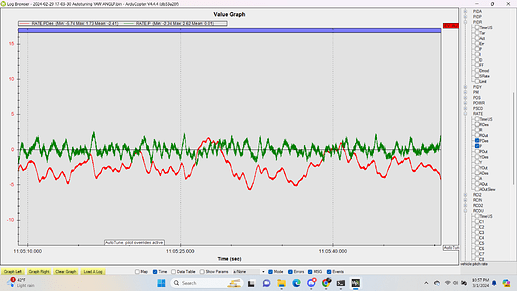@bnsgeyer
Hello Bill,
last week I tried to tune my big Bell 230 with autotune.
The Bell 230 has a rotor diameter of 1.80 meters, weighs about 11 kg and is equipped with an electric Skyfox mechanics from VARIO.
I admit that the Skyfox mechanism is not a modern design and its load capacity is not comparable with a modern mechanism for 3D flying.
However, the load capacity of the gears etc. is perfectly adequate for scale flying.
I have carried out three flights. First I flew the ROLL_FF parameter. That worked.
Then I tried to fly Pitch_FF. That did not work. I always received the message “Leveling failed, tune manually”. I therefore left PITCH_FF at 0.15 and tried to fly RAT_P and RAT_D for the roll.
That didn’t work either. Here, too, I always got the leveling error.
But then the worst came. The helicopter crashed because a pair of gears in the main gearbox broke. Fortunately, the damage wasn’t too bad.
I suspect that the strong movements during FF tuning overloaded the gears. Looking at the flight movements of this large and heavy helicopter during FF tuning, I was afraid for the model. I was always close to canceling the tuning.
Have you ever tuned such large and heavy helis with autotune?
Is there a way to reduce the violent movements of large scale models?
I am hesitant to use autotuning on such large models in the future. I might lose your support in case of problems, but who wants to lose their expensive and labor-intensive helis? Maybe you have a solution oder advice for me.
When does the message “Leveling failed” appear? And what can you do then?
I am attaching the log files here:
https://1drv.ms/u/s!AjSq727ChpJzgw8ZOFqGDNHrqYE0?e=PnGKwV
https://1drv.ms/u/s!AjSq727ChpJzgw5BdTw7EgQSCPrO?e=m6IcY2
https://1drv.ms/u/s!AjSq727ChpJzgw0bOY1N6Q0LdewN?e=g4zUYO
Many thanks for your help
BR
Heri
